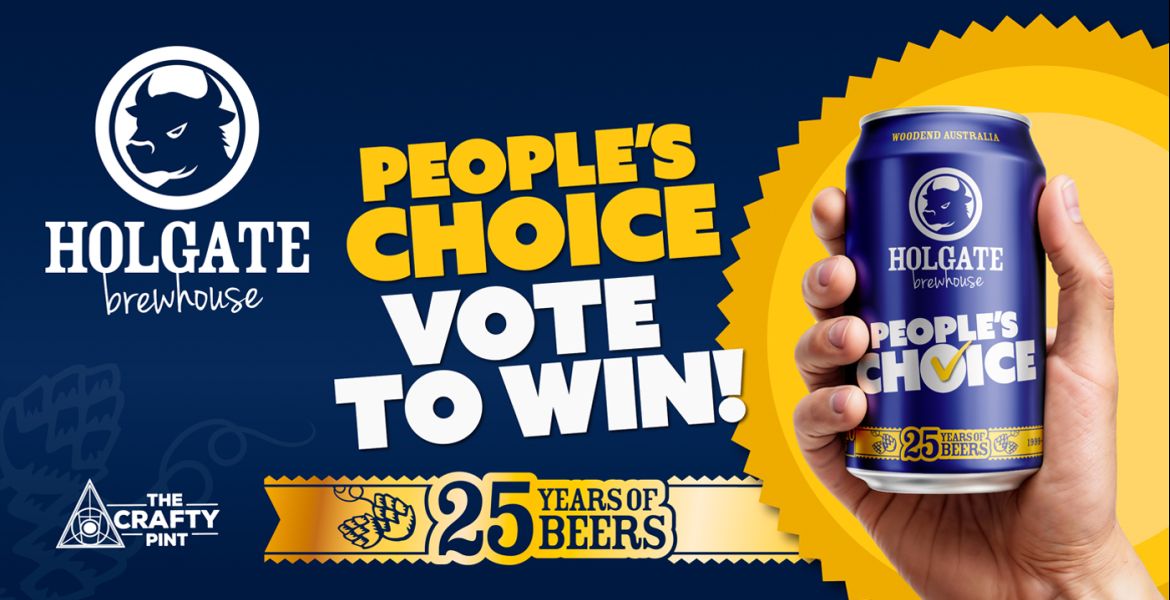There are many significant moments in Nail’s history, however the one we celebrate here is March 23, 2000. It's the day the first commercially released Nail beer flowed through the taps at an inner-city Perth pub, one where the owner had taken a shine to a young, wide eyed brewer.
The story of Nail is the story of John Stallwood: Nail’s founder, owner and early graphic designer.
It’s the story of an everyman who was “guided by the beer gods”, didn’t back down and made great friends along the way. It's a story which ended up creating opportunities for many Australian breweries, filling trophy cabinets and pushing Australian beer forward.
Honest, cheeky, self-effacing, and also rightfully proud of his achievements, John qualifies what you’re about to read with: “A lot of this is close to exact but not quite.” It’s been one hell of a ride, and one he’s thankful for, so who can blame him.
“Beer might have chosen me," John says, "because it looks after me.”
As the 20th anniversary of one of Australia's pioneering brewing companies approaches, Guy Southern sat down with John over a few beers.
Before Nail was Nail

The brewery tagline "Before Craft was Craft" is well known to fans of Nail's beers; however, the years prior to Nail’s Y2K launch are rather less so. There wasn’t a beer industry anything like the one we now know, more a small clutch of various sized breweries operating disparately around the country, some inspired by Australia’s first microbrewery, launched inside the Sail & Anchor in Fremantle in the early '80s.
“I was young then but I saw Fremantle in full action and it was exciting," John says, "but little did I know how it was educating people about good beer. Matilda Bay started in ‘84, then the Sail & Anchor and then we had the America's Cup in ’87, that introduced boutique and international beer to Fremantle. It’s been a long process to educate people in Australia about beer because everyone just drinks lagers.
“In ’94, me and Luke Dillon gave another mate, Craig Stranger, a homebrew kit for his birthday, hoping that he would make us beer. He did two batches and then gave the homebrew kit back to us and said, 'Here, you make the beer.'
"So, I started in ’94 making bad beer. It was my start in brewing and I had a long way to go."
Back then, John was studying for a Bachelor of Business degree in marketing at Edith Cowan University in Perth and living at the Nedlands Yacht Club as the caretaker bosun. And it was at the yacht club that Nail started – out back, where the bosun lived.
“Nail Ale was the original," John recalls. "I came up with the name and the beer varied a lot. It wasn’t the best beer but I enjoyed making it and people liked the name. I made t-shirts and posters, and people started to want to order beer, so I registered the trademark in ’94/’95, and business name in ’95."

Despite not knowing what he wanted to do, John describes one scenario during the founding of the business which speaks not only to the essence of Nail, but also the technological challenges that faced anyone starting a brewery in the 1990s.
“When the trademark was made I cut the word ‘sale’ out of the newspaper, and used the word ‘ale’ for the Ale, and then used the 'al' and then drew the letters N and L myself, because back then we didn’t have computers that did graphics and stuff, or much access, so I used real cut and paste.
“I basically used the photocopying machine at the sailing club to make the logo, business cards, posters and when I went to the trademarks office, I asked what I needed to do. They said, 'You need to put a picture of the logo there.' So I just ripped the Nail Ale off my business card and stuck it on right there and you can see, when you look up the trademark, the actual logo that’s registered as a trademark is the original: it says, ‘Nail Ale with tear mark’."
Ballarat to Bobby Dazzlers

Now qualified in marketing but otherwise directionless, John put his mind to the one thing he knew made him and others happy: beer.
“When I decided to start a brewery, I realised that I would need to start brewing beer better, so I decided I needed to study," he says. "Laurie Strachan wrote the first homebrew book I ever read [The Complete Guide to Home Brewing in Australia] and I wrote a letter to him asking for advice. He said to contact the University of Ballarat and get Brewers Workshop, which was an early brewing software package.
“So, I contacted the University of Ballarat and they had a 100 litre pilot kit. In the late ‘80s they thought that craft beer was going to take off but it didn’t happen for another twenty years, so that kit wasn’t used in brewing, it was used in the science class to help people understand brewing.
“When I applied, they let me do Honours in Science, which was amazing because I didn’t have a science degree.”
Once again, and in a pattern that continues to this day, the beer gods showed favour as he spent 1998 living on campus with Dean McLeod and Michael Fic as the University of Ballarat’s only brewing students.
“I knew that I wanted to learn to brew and the longer everything went, the passion just grew stronger. It was the first time that I really knew what I wanted to do; it was what I was meant to do.
“I don’t think I got a very good mark but I passed. My thesis might not be the best but it taught me about the industry, how to brew, and I worked out, which wasn’t that hard I suppose, that everyone likes lagers.”

Returning to Perth, John’s enthusiasm and new knowledge coalesced into the beginning of what we now know as Nail Brewing.
“I made a proposal to put a 100 litre kit pilot brewery into a hotel and gave it to three places," he says. "One of those was owned by Maurice Brockwell, whose brother-in-law sailed with my dad."
Maurice also owned more than 20 pubs throughout Australia at the time and offered to go over the proposal and offer some advice.
“I think he found me a little bit entertaining because I was enthusiastic but I didn’t know what I was doing really. He opened the door to me and in the few years that I knew him he changed my life.”
Maurice gave John a space to install a brewery at Bobby Dazzlers in the Perth CBD. He passed away in 2002 at the age of 53; Nail Red is brewed in his memory to this day.
Between Maurice’s support and Stallwood family money, John launched commercially with Nail Ale, an Australian style pale ale in the Coopers mould. Setting up the original 600-litre Nail brewery at Bobby Dazzlers also brought new friends who would later change John’s life, and others who would help him shape the Australian industry.
“Brendan Varis was part of the install team at Bobby Dazzlers," he recalls. "He had a big ponytail and stuff, and had the idea of starting Feral at Baskerville.”

But the early days weren’t easy and feedback was swift.
“I used to have to mash in at 4am because they didn’t want the smell of the brewery in the pub – people complained about the smell.
“I had a guy from one of the big breweries come in and say, ‘We’ve run all the numbers and what you're doing doesn’t add up’ – and he was kinda right. You need to be doing 750,000 litres for it to add up but Matilda Bay and Swan are no longer in WA, so Nail outlasted all of them.
“Over the 20 years the industry has changed a lot. When Nail started people were saying, 'This doesn’t taste like beer’, ‘How do you make money from this?’ – I was doing something that wasn’t the done thing. Now the industry has boomed and Nail Ale is seen as mainstream.”
In an interesting twist, Nail’s portfolio now features QR codes and integrated consumer apps – such as on the current Nail NBT series via which he's looking to replace Nail Ale – a move recognising how far the Australian beer market has evolved.
But as much as things change, they stay the same. While there are current concerns about tap contracts, in 2000 there was no room at the inn either.
“A publican was either Swan or CUB, that was it,” John says.
“I lived at 1 John Street, Cottesloe, in an old house that was meant to be knocked down – for $65 a week – with a group of friends. The Cottesloe Hotel was straight across the road and they said, 'If the launch goes well, we’ll put Nail Ale on the at the Cott.'."
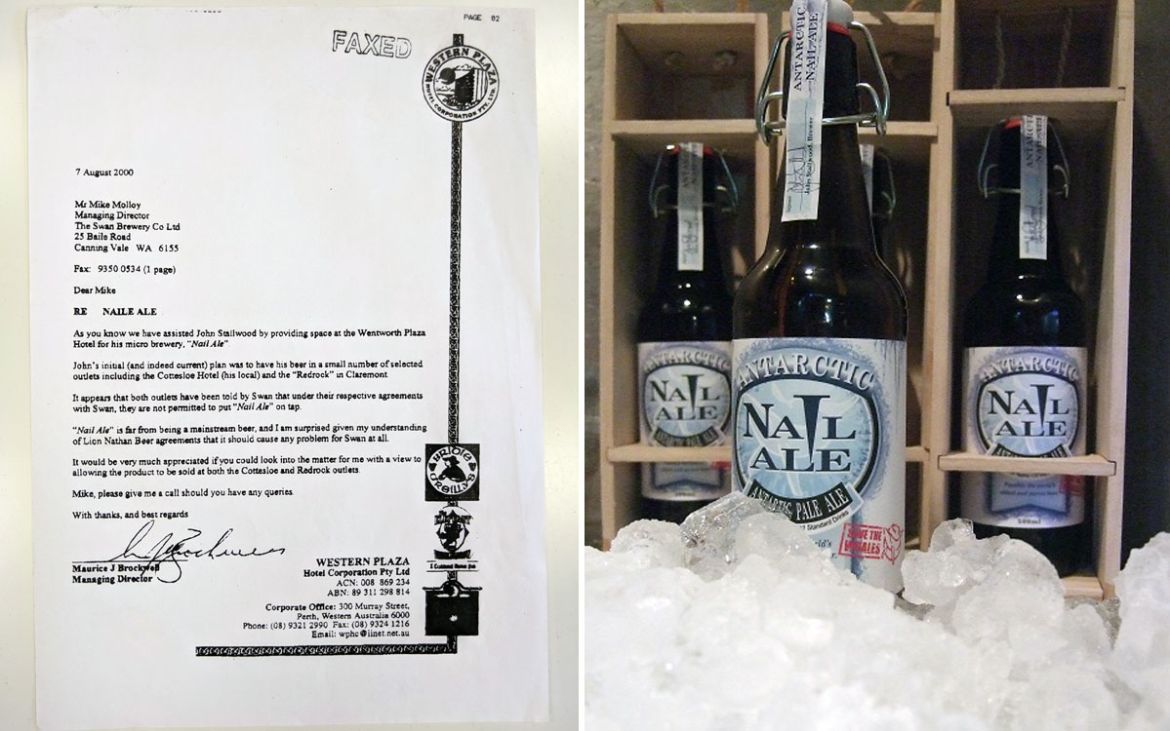
The Bobby Dazzlers launch went very well and shortly afterwards WA beer writer Vic Crossland wrote an article about Nail going on tap at the Cottesloe Hotel: the first non-Swan beer to pour there in more than 20 years. Or so they thought – the larger brewery intervened before a drop was poured.
“Because I lived across the road from the Cott, I never gave up on it. I wanted to drink Nail Ale at my local. So, I wrote letters to Lion and I had meetings with Maurice and he ended up sending a fax to them, because with 23 pubs he was pretty powerful and had a good relationship. Eventually Swan called me and said it’s up to the owners.
"Nail Ale finally went on tap at the Cott but it took six months.”
In many ways, this persistence was a tipping point for craft breweries in general, many of whom now compete for taps with each other, never mind the larger operations.
Bobby Dazzlers soon became a home for the local beer community at a time when there were no craft beer bars, or warehouse breweries in gentrifying neighbourhoods, to visit. With a common cause, they formed Australia’s first brewer’s association in 2001, the Western Australian Brewers Association (WABA). In doing so, John Stallwood, as WABA’s first President, and his fellow members began beer industry advocacy, a movement which quickly spread nationally.
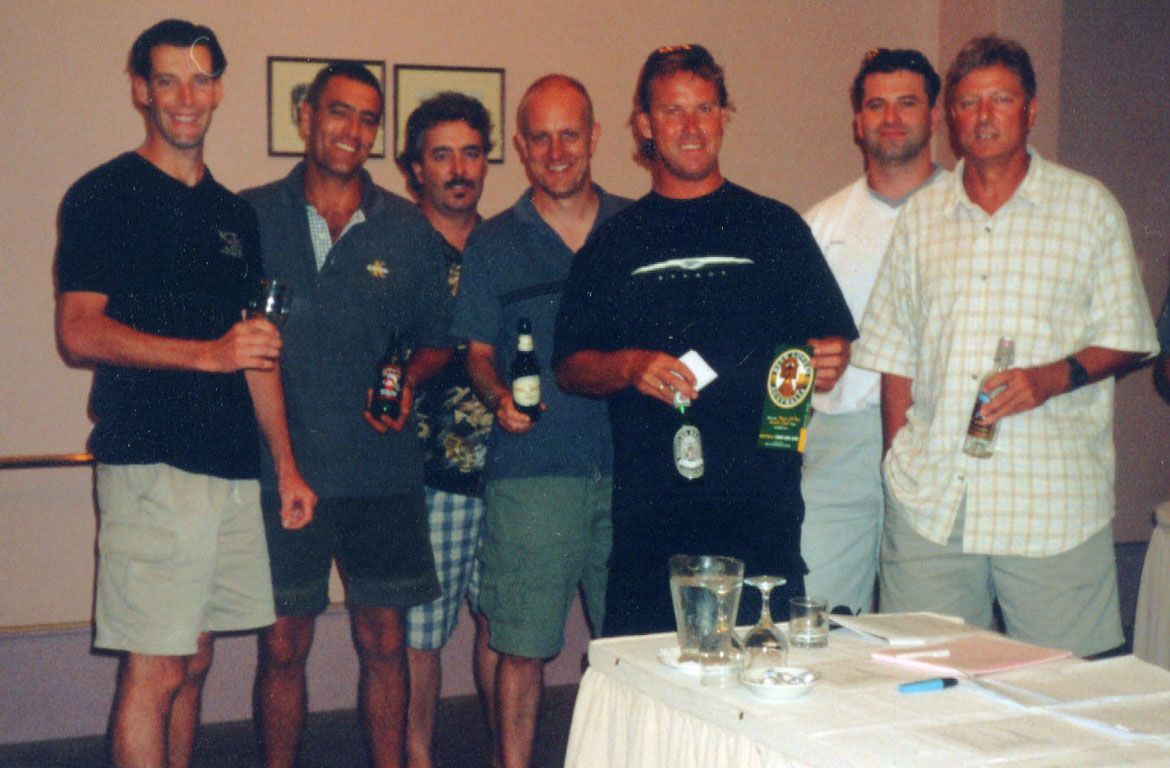
“We realised that we all had the same problems, so let’s work on them together and that’s when WABA started," he says. "That was the first brewing association in Australia. It was a good step for craft beer because from then on WABA helped VAMI [the Victorian Association of Microbreweries] with Cam from Mountain Goat; we helped the New South Wales Brewers Guild and SAMBA [South Australian Microbrewery Association].”
This also led to the first WA Beer Week in 2002 and an idea that craftier beer options could enjoy a symbiotic relationship with macro beer.
“Clancy’s Fremantle was one of the first independent pubs that poured Nail beer but Nail Stout was taken off because it was only selling half a keg a week, or something like that," John says. "So, I put a proposal together for Joe Fisher from Clancy’s for the WA Ale Bar (Whale Bar) – the idea of having a few lagers on and a range of craft beer and he’d still sell the same amount of lager.
"Why not have some variety? You don’t need ten lagers. So, they started with six craft beers on tap back in the early 2000s and now they’ve got over twenty.”
With growing acclaim – and influence – Nail was now on the rise, albeit from a minuscule base. What happened next is well known and intimately woven into the story of John and Nail.
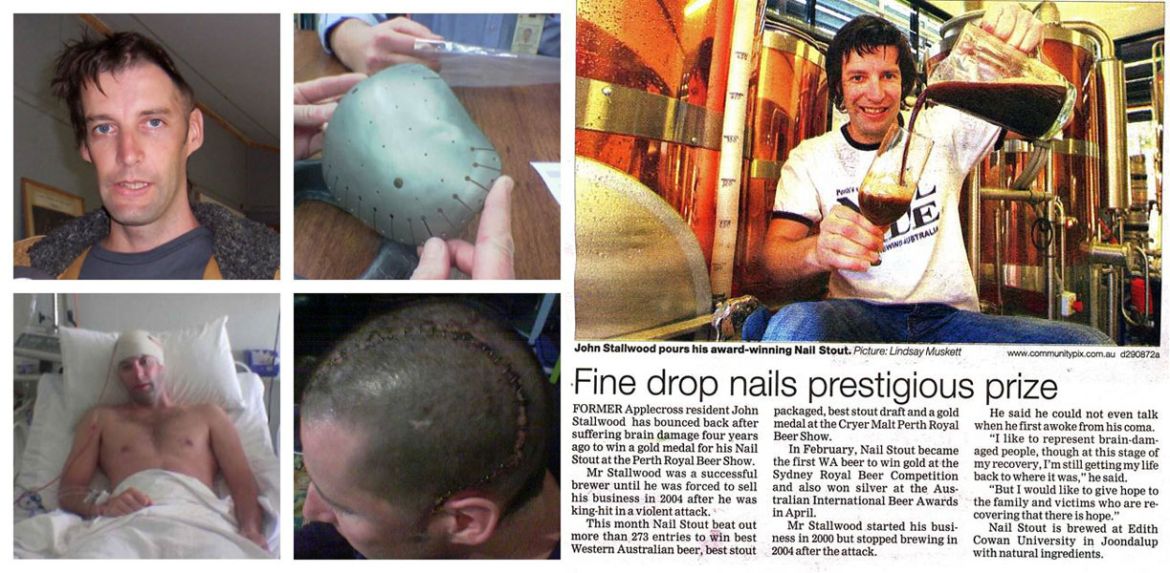
On Good Friday 2004, John was coward punched in Fremantle, an event that nearly killed him and changed the course of his life. A citizen’s arrest by Gareth "Skywalker" Tarrant – now immortalised on the Skywalker Golden IPA – allowed for later mediation with the attacker and subsequent closure; as John puts it, his life had been ruined and he didn’t want to do that to someone else.
Even now, he has a Zen-like matter-of-factness about the incident, and subsequent years of fallout, that others might have worn with bitter resentment.
“I was unlucky it happened but I’m alive and I’ve got two kids," he says.
In a Shakespearean twist, to fund his surgery, titanium cranium plate – the largest his doctors had ever inserted – and rehabilitation, John’s parents sold his brewery equipment to the Monk, then called Mad Monk, just metres across the road from where he was attacked.
As his condition improved, he gypsy brewed at Jarrah Jacks and Edith Cowan University, where he met another mentor, Hugh Dunn, a man with a lengthy brewing history at XXXX, Swan and Old Brewery, to name a few.
“Nail shut down, then come to 2008, one of the great things was becoming best friends with Hugh Dunn," John says. "He says that I’m not good enough to be his student but I listened to his advice for five years and brewed at Edith Cowan from 2008 to 2012. I learned a lot from Hugh and ... Nail has won trophies and medals at awards ever since then.
“You couldn’t Google answers back then. I’m an artist brewer, where Hugh is a science brewer, and he gave me the direction around that time.
“I can brew better beer than Hugh, I’m pretty sure. And he’ll admit that. You can ask him, but he understands how to fix problems. Hugh is a best mate and a mentor to me and ironically he now works for Feral but he’s always been part of Nail.”

There are numerous anecdotes from this period – from founding and running the brewer’s resources website microbrewing.com.au – "It actually earned me about $25,000," he recalls – to launching cartons explaining beer excise problems and releasing Antarctic Nail Ale, made with water from an iceberg, which sold for $1,850 at a Sea Shepherd auction, making it the most expensive beer in the world at the time.
However, it was Nail’s ten year anniversary beer which became a watershed for the brewery’s next chapter. Clout Stout not only created its own legacy but it changed Australian beer.
The concept seems relatively simple now, almost cute: make a double sized version of Nail Stout and release it in large format Champagne bottles. However, in 2010 this was radical and influential. Beyond the exceptional liquid, the very idea of Clout Stout challenged and changed the concept of what beer was and could be and, in the process, pushed Australian beer forward.
“Brendan O’Sullivan [now head brewer at 3 Ravens], he helped me with Clout Stout for Nail’s tenth birthday. He was working at the International Beer Shop and he taught me things about beer that I didn’t know.
“Other beers do influence you a lot too. For Clout Stout, there’s obviously Feral’s Boris, but Gonzo Imperial Porter from Flying Dog, that hit me, and Moo Brew’s Imperial Stout influenced us because if they can sell this for that, then we’re going to sell ours for that."
The rich, brooding, limited release imperial stout – which will return this year – cemented itself as an Australian classic, proving beer was worthy in the broader market. It also proved John was back.
The Renaissance

After workshopping ideas for a brewery collective, on January 18, 2012, Nail and Feral announced BrewCorp, a joint venture brewery that would see the pair share a 50 hectolitre brewhouse, one of Australia’s largest independently-owned operations at the time.
BrewCorp’s scale allowed both breweries to better facilitate national distribution deals and, subsequently, build recognition beyond WA. For Nail, this additional production volume, and collaborative environment, also allowed for greater creative output.
Nail Golden was one of the first new release, although it was 2014’s Citra double dry-hopped Nail Red that set the brewery on its current path. In a continuing theme of finding opportunity hidden in plain sight, craft red ales were rarely seen, and John's was quickly lauded by fans and critics.
Similarly, 2016’s VPA (Very Pale Ale) created its own space in an increasingly congested landscape and was Nail’s first canned release, one which saw them debut a new "hardware chic" look for the brewery designed by Perth's Zendoke.
“I am very, very biased on Nail beers, and a little bit of Feral, but VPA is the beer I drink the most," John says. "I love VPA, it’s unique. I find it different to other beers and that’s because it makes good use of El Dorado, and that’s a hard hop to use, I think.
"All beers have super powers and VPA makes people talk louder.
“We brewed it a few times over six months and it did very well, and then Gage Roads' Little Dove got Champion Beer at the AIBAs. VPA was similar but better, I thought. And Steve Finney, who ended up working for Gage and now Otherside, gave me motivation to bring it out. We brought VPA in December and it took off like a rocket."

With both accolades and portfolio building, by 2016 the pair had outgrown the original BrewCorp location and moved a few doors down the road, tripling their capacity and installing a state-of-the-art canning line, a move which, while needed, also multiplied the pressure on its owners.
“We kinda had BrewCorp set up wrong. It should have been 25 percent Nail and 75 percent Feral but I wanted to have fair control of conflict, but that didn’t work out with 50 percent anyway. So, I decided that I may as well pay heaps less and get 25 percent. So we moved 350 metres up the road and it cost half a million dollars. It was a big project and we were about six weeks without brewing.
“The rent changed from an 850 sqm warehouse to a 2,750 sqm warehouse, plus Feral bought the new canning line, so we were both financially stressed on the same ratio but they were six times bigger.”
All the while opportunities continued to present themselves and in March 2017 John travelled to China with a small Australian brewing contingent; upon his return, Nail’s path changed once again.
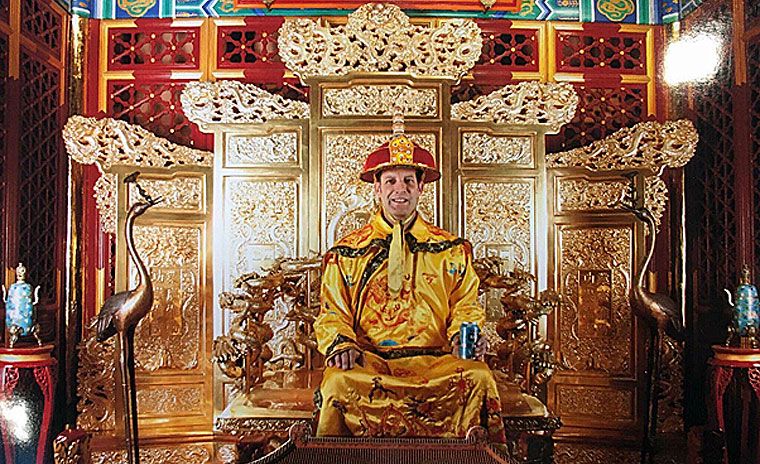
“When I came back from China Brendan said, ‘I’ve gotta talk to you. Do you want me to talk to you now or in a week? There’s a big thing happening.'
"I should have said a week, because I needed to get China stuff sorted but obviously when someone says that to you, you’re, 'Tell me now.'
“He said, 'I can’t continue and we’ve got Feral up for sale.'
“First of all, I tried to give him options on how I could help, which had nothing to do with money obviously, like, ‘I can help you brew better beer, like Nail’, but it was the right decision for them. That would have been March and it was sold in December. It’s a long process with lots of legal stuff but he made sure that I had financial stress removed from me.
“Brendan selling out was an out, where he had to take that out. We were both suffering but he made sure that I was in a better place when he left. We didn’t have a contract, just a handshake and he made sure that Nail could keep brewing at BrewCorp on a similar setup to what we were flowing on, and the sale got rid of my debt.
“So," he adds, laughing, "China hasn’t moved since then.”
Reflection & future

Anniversaries are equally retrospective and future facing. Nail’s serpentine journey thus far is one without parallel, which makes having a clear idea of what’s to come even more challenging.
“It’s hard to know our future but we know what we’re are doing to the end of the year, and next year," John says. "The year after that, we’ll start working on soon. We’ve gotta make some big decisions about when our contract with Feral is over. Our relationship is good but things can change quick.”
Given the past twenty years, the sanguine reflection is a significant understatement, however there are no current plans for a brewpub, although John does note he'll need a production facility at some time.
“I own 100 percent of Nail and I take the punishment to do that and that’s the sacrifice from doing that," he says. "The only way to change is to eliminate risk from me.
"If a problem happens now with Nail, that’s my life and I’m pretty much done. I don’t want to be a consultant or whatever; I’ve dedicated twenty years. I have a dream and it’s just about how to get to that dream, and we don’t know yet.
“I don’t think we need a brewpub at this moment. If you were starting out now, you’d definitely need a brewpub but we’ve done twenty years not having one and we concentrate on brewing beer and selling beer. We don’t concentrate on running pubs; we sell beer to people running pubs. We need to concentrate on what we are good at.
“My financial stress is relieved at the moment and I don’t want to get back into it until I can do it properly. I could get partners and stuff, but that might screw me up too.”
More broadly, John’s earnest, ego-free approach is most evident when reflecting on two decades of Nail and the Australian beer industry.
“Everything surprised me, and the good surprises of the joy of seeing people drink Nail beers and awards and stuff like that. But the surprises in the industry is, being involved in the craft beer industry so early, although I didn’t know I was part of those pioneering stages.
"Looking back, it’s amazing to have been part of the industry as it’s changed and evolved and how it was so little. I knew it was going to grow but now there’s like 800 breweries.
“Styles and hops have grown, how technology has changed with the internet and the industry has changed with brewing equipment. You know homebrewers now have stuff that we couldn’t get when we started our brewery. I feel privileged to have been part of it, you can’t dream to be part of something like that. You can’t buy that.
“It’s special to see someone drink your beer, and then when people start to know your beer is another special stage. It’s got rewards that aren’t money. If you’re not in it for the money, then it’s hard work, but you’ll have passion for it and passion drives you through the barriers.
“Anyone can do it. I’m an average person who tries hard and never gives up. Anyone can do it if you don’t give up, but I also have a great family and best friends that have been around me at the right time.
“I’ve been very lucky and I thank the beer gods for that.”
John Stallwood invites fans to celebrate twenty years of Nail on social media on Monday, March 23, by using the #raiseanail hashtag.
For a more in depth look at the BrewCorp sale from John’s perspective head here.
Nail’s Y2K anniversary IPA is out now, in limited, keg only release.








